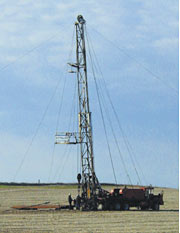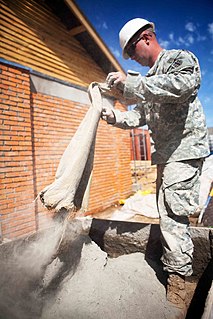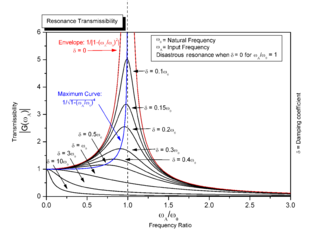Schlumberger Limited is the world's largest oilfield services company. Schlumberger employs approximately 100,000 people representing more than 140 nationalities working in more than 85 countries. Schlumberger has four principal executive offices located in Paris, Houston, London, and The Hague.
Baker Hughes is an international industrial service company and one of the world's largest oil field services companies. The company provides the oil and gas industry with products and services for oil drilling, formation evaluation, completion, production and reservoir consulting. Baker Hughes is organized in Delaware and headquartered in Houston. The company was originally known as Baker Hughes Incorporated until 2017 when it was merged with GE Oil and Gas to become Baker Hughes, a GE Company (BHGE), then in 2019 the company divested from General Electric and became Baker Hughes Company. Despite the separation, General Electric still maintain a 38.4% share hold in the company.
Well logging, also known as borehole logging is the practice of making a detailed record of the geologic formations penetrated by a borehole. The log may be based either on visual inspection of samples brought to the surface or on physical measurements made by instruments lowered into the hole. Some types of geophysical well logs can be done during any phase of a well's history: drilling, completing, producing, or abandoning. Well logging is performed in boreholes drilled for the oil and gas, groundwater, mineral and geothermal exploration, as well as part of environmental and geotechnical studies.

Casing is large diameter pipe that is assembled and inserted into a recently drilled section of a borehole. Similar to the bones of a spine protecting the spinal cord, casing is set inside the drilled borehole to protect and support the wellstream. The lower portion is typically held in place with cement. Deeper strings usually are not cemented all the way to the surface, so the weight of the pipe must be partially supported by a casing hanger in the wellhead.
Production tubing is a tube used in a wellbore through which production fluids are produced (travel).

A wellhead is the component at the surface of an oil or gas well that provides the structural and pressure-containing interface for the drilling and production equipment.
Logging while drilling (LWD) is a technique of conveying well logging tools into the well borehole downhole as part of the bottom hole assembly (BHA).

A drill stem test (DST) is a procedure for isolating and testing the pressure, permeability and productive capacity of a geological formation during the drilling of a well. The test is an important measurement of pressure behaviour at the drill stem and is a valuable way of obtaining information on the formation fluid and establishing whether a well has found a commercial hydrocarbon reservoir.
Geosteering is the optimal placement of a wellbore based on the results of realtime downhole geological and geophysical logging measurements rather than three-dimensional targets in space. The objective is usually to keep a directional wellbore within a hydrocarbon pay zone defined in terms of its resistivity, density or even biostratigraphy. In mature areas, geosteering may be used to keep a wellbore in a particular section of a reservoir to minimize gas or water breakthrough and maximize economic production from the well. In the process of drilling a borehole, geosteering is the act of adjusting the borehole position on the fly to reach one or more geological targets. These changes are based on geological information gathered while drilling. Originally only a projected target would be aimed for with crude directional tools. Now the advent of rotary steerable tools and an ever-increasing arsenal of geophysical tools enables well placement with ever-increasing accuracy. Typically a basic tool configuration will have directional and inclination sensors, along with a gamma ray tool. Other options are neutron density, look ahead seismic, downhole pressure readings et al. Due to the vast volume of data generated, especially by imaging tools, the data transmitted to surface is a carefully selected fraction of what is available. Data is collected in memory for a data dump when back on surface with the tool.
Petrophysics is the study of physical and chemical rock properties and their interactions with fluids.
In oil drilling and borehole mining, a casing shoe or guide shoe is a bull-nose shaped device which is attached to the bottom of the casing string. A casing hanger, which allows the casing to be suspended from the wellhead, is attached to the top of the casing.

The term workover is used to refer to any kind of oil well intervention involving invasive techniques, such as wireline, coiled tubing or snubbing. More specifically, a workover refers to the expensive process of pulling and replacing completion or production hardware in order to extend the life of the well.
The formation evaluation gamma ray log is a record of the variation with depth of the natural radioactivity of earth materials in a wellbore. Measurement of natural emission of gamma rays in oil and gas wells are useful because shales and sandstones typically have different gamma ray levels. Shales and clays are responsible for most natural radioactivity, so gamma ray log often is a good indicator of such rocks. In addition, the log is also used for correlation between wells, for depth correlation between open and cased holes, and for depth correlation between logging runs.

Well completion is the process of making a well ready for production after drilling operations. This principally involves preparing the bottom of the hole to the required specifications, running in the production tubing and its associated down hole tools as well as perforating and stimulating as required. Sometimes, the process of running in and cementing the casing is also included. After a well has been drilled, should the drilling fluids be removed, the well would eventually close in upon itself. Casing ensures that this will not happen while also protecting the wellstream from outside incumbents, like water or sand.
Oilfield terminology refers to the jargon used by those working in fields within and related to the upstream segment of the petroleum industry. It includes words and phrases describing professions, equipment, and procedures specific to the industry. It may also include slang terms used by oilfield workers to describe the same.
Squeeze job, or squeeze cementing is a term often used in the oilfield to describe the process of injecting cement slurry into a zone, generally for pressure-isolation purposes.
Cementing Equipment includes various items used while drilling oil/gas/water wells.

Offshore oil spill prevention and response is the study and practice of reducing the number of offshore incidents that release oil or hazardous substances into the environment and limiting the amount released during those incidents.









